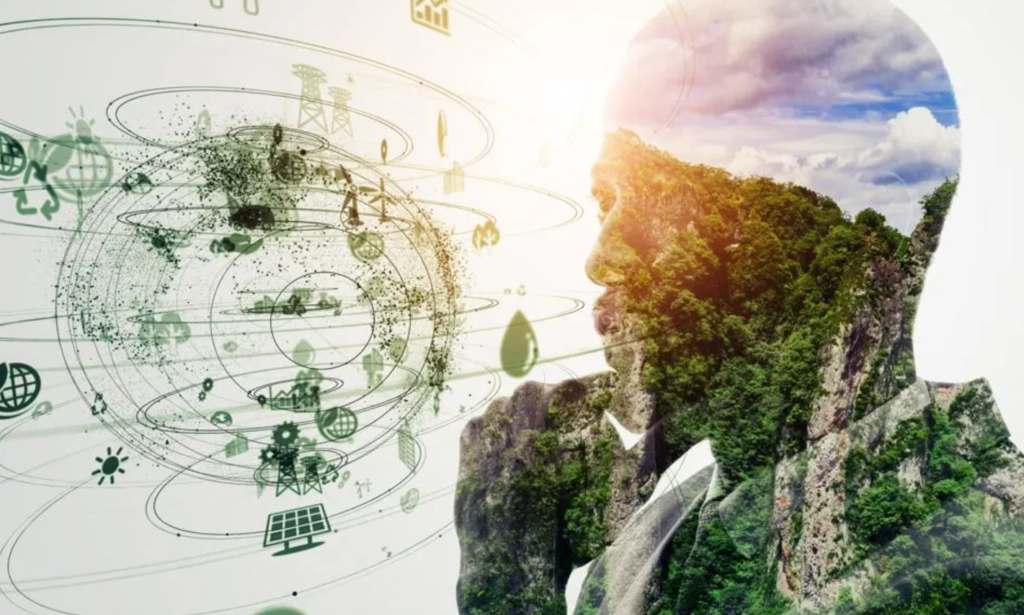Sustainability has emerged as a top value indicator for investors and a significant deciding factor for consumers, leading companies to explore new ways to assess and demonstrate their sustainable contributions. Artificial intelligence can help companies generate these reports for multiple audiences. This is in the conclusion of a discussion led by Dr. Priyanka Shrivastava, a researcher and award-winning professor at the Hult International Business School.
One of the key challenges that companies face is how to measure sustainability when there are multiple subjective interpretations of what counts. Frameworks like Environmental and Social governance (ESG) and Sustainable development Goals (SDG) are being actively discussed among business stakeholders, investors, and government authorities to measure and scale the sustainability index of companies and quantify efforts. In today’s hyper-competitive landscape, an organization’s growth and success are sometimes defined by its decisions around socioeconomic and environmental considerations. Corporate Social Responsibility (CSR), which is often defined as “don’t do bad things” has transformed into a mandate to “do good”, encapsulated in the strategic priority of ESG or SDG.
Importance of Sustainability Reports
Popular rating agencies like S&P Global produce a sustainability index for individual companies. This measurement capture investors’ attention to benchmark long-term impacts and returns from a business. Organizations are harnessing the power of their cloud-based strategy to make sustainability data on companies readily available as part of open data initiatives by the cloud service providers (AWS, GCP, Azure). The Sustainability Accounting Standards Board (SASB), the Global Reporting Initiative (GRI), the Carbon Disclosure Project (CDP), and the Task Force on Climate-Related Financial Disclosures (TCFD) are among the groups that are establishing standards to make 90% of S&P 500 indexed companies publish sustainability reports and make them readily available. In 2022, 95% of the companies in the S&P 500 index published a sustainability report, up from only 20% in 2011.
AI To Generate Sustainable Actions
AI empowers both sustainable business practices and reporting on the impact of these initiatives. For example, AI has the potential to facilitate the creation of smart cities and circular economies that make efficient use of resources. AI can also aid in the development of renewable electricity by enabling smart networks that partially match energy consumption to periods when the sun shines and the wind blows. AI positively drives environmental outcomes through its ability to analyze large-scale interconnected databases to develop coordinated actions aimed at environmental preservation. Previous research provides evidence that AI breakthroughs will aid in the knowledge of climate change and the modeling of its potential consequences. Furthermore, AI will aid in the development of low-carbon energy systems that incorporate a high proportion of renewable energy and energy efficiency, all of which are required to combat climate change and improve ecological health.
However, as we have seen over the last two decades, as digital breakthroughs bring us daily benefits, they also raise a slew of difficult questions and broad concerns about how technology will impact society. We have witnessed this as the internet matured and became a crucial component of our work and personal life, and this appears to be the case as AI advances and the world changes. Although the identified links between AI and sustainable goals are primarily positive, trade-offs must be considered. Advanced AI technologies, research, and commercial development may demand massive computational resources only available through enormous computer centers. These facilities have a high energy need and a high carbon footprint. AI technologies rely heavily on insights through data analytics and resources that may not be equally available in low and middle-income countries, potentially widening the economic gap and establishing new inequities while affecting long-term goals for economic growth, modernization, and infrastructure, as well as reduced inequalities.
Looking back over the last 200 years, a series of industrial revolutions have dramatically enhanced human living conditions. However, each previous industrial revolution borrowed from the future to pay for the present by obtaining economic expansion at the expense of our planet’s health. Today’s technological revolution must break this tendency and produce sustained economic development. It is the collective responsibility of corporates, governments, and individuals to think strategically to harness the enormous potential that AI offers to propel economic prosperity coupled with a more sustainable future.
The first step in this vital quest is the deployment of AI tools to measure and report the environmental and social impact of contemporary corporate actions. AI can also help to cross-check and validate these reports, ensuring that they are accurate, transparent, and readily available. Measurement is the first step towards action. And this measurement just became much easier and more available due to the advances and proliferation of artificial intelligence.
Article Credits: Forbes
